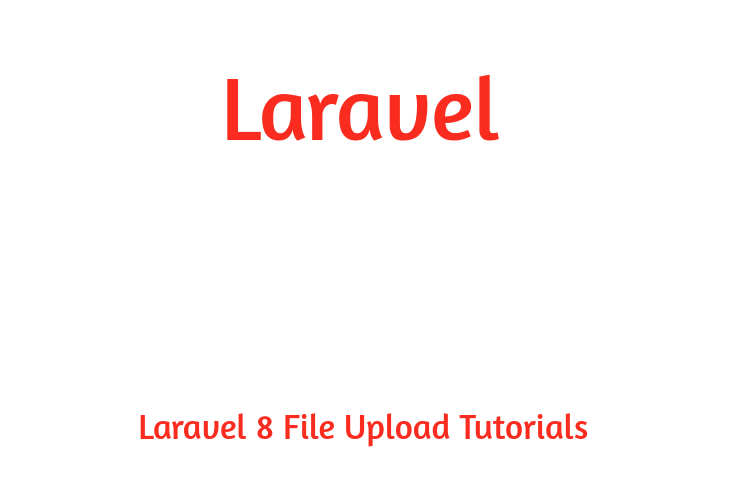Hello Dev.
In this articles, we’ll be gaining knowledge of authenticate REST APIs using JWT in the latest Laravel 8 version. you may educated ways to create a REST API the usage of Laravel 8 with JWT authentication.
We will see the way to set up JWT authentication in Laravel 8 and implement a secured REST API using the tymon/jwt-auth package.
in this academic, we’ll see one by one implement a REST API with php and Laravel 8 with authentication via JWT tokens.
Step 1: Install Laravel 8 Application
permit’s begin our instance by create a Laravel 8 application the use of Composer — the dependency management tool for php developers.
Head over to a new command-line interface and run the following command:
$ composer create-project --prefer-dist laravel/laravel jwtdemo
Step 2: Configuring a MySQL Database
After creating your Laravel 8 application using Composer, let’s configure a MySQL database in second step.
Open the .env file located in the root of your Laravel 8′ application. Next, add the following database configuration details:
.env
DB_CONNECTION=mysql
DB_HOST=127.0.0.1
DB_PORT=3306
DB_DATABASE= <database-name>
DB_USERNAME= <database-username>
DB_PASSWORD= <database-password>
Step 3: Install jwt
Now that we have a Laravel 8 application with a MySQL database configured, let’s start implementing JWT authentication by installing the jwt-auth package.
Head back to your terminal and run the following command from the root of your project’s folder:
$ composer require tymon/jwt-auth
Step 4: Set up JWT Authentication
in this step, we have a Laravel 8 application with MySQL configured. We also installed the jwt-auth library in the previous step. Now, let’s set up JWT authentication in our application.
go to the config/app.php file and add JWT providers and aliases as follows:
config/app.php
'providers' => [
….
'TymonJWTAuthProvidersJWTAuthServiceProvider',
],
'aliases' => [
….
'JWTAuth' => 'TymonJWTAuthFacadesJWTAuth',
'JWTFactory' => 'TymonJWTAuthFacadesJWTFactory',
],
Next, go to your terminal and run the following command:
$ php artisan vendor:publish --provider="TymonJWTAuthProvidersJWTAuthServiceProvider"
Step 5: Generat JWT Secret Key
After configuring JWT authentication in our Laravel 8 app. We’ll need to generate a JWT secret key in this step.
Head over to your terminal and run the following command to generate the JWT secret key:
$ php artisan jwt:generate
Next, open the vendor/tymon/src/Commands/JWTGenerateCommand.php and update it as follows:
public function handle() {$this->fire();}
Step 6: Implement JWT Authentication
After configuring JWT in Laravel 8. In this step, we’ll implement it in the User model.
Open the App/User.php file, and update it as follows:
App/User.php
<?php
namespace App;
use IlluminateNotificationsNotifiable;
use IlluminateFoundationAuthUser as Authenticatable;
class User extends Authenticatable
{
use Notifiable;
protected $fillable = [
'name', 'email', 'password',
];
protected $hidden = [
'password', 'remember_token',
];
}
Step 7: Implement the REST API Controller
Let’s now implement a Laravel 8 controller for handling JWT authentication in our REST API application.
Head back to your terminal and run the following command to generate a controller:
$ php artisan make:controller JwtAuthController
Next, open the app/http/controllers/JwtAuthController.php file, and add the following methods:
JwtAuthController.php
<?php
namespace AppHttpControllers;
use JWTAuth;
use Validator;
use AppUser;
use IlluminateHttpRequest;
use AppHttpRequestsRegisterAuthRequest;
use TymonJWTAuthExceptionsJWTException;
use SymfonyComponentHttpFoundationResponse;
class JwtAuthController extends Controller
{
public $token = true;
public function register(Request $request)
{
$validator = Validator::make($request->all(),
[
'name' => 'required',
'email' => 'required|email',
'password' => 'required',
'c_password' => 'required|same:password',
]);
if ($validator->fails()) {
return response()->json(['error'=>$validator->errors()], 401);
}
$user = new User();
$user->name = $request->name;
$user->email = $request->email;
$user->password = bcrypt($request->password);
$user->save();
if ($this->token) {
return $this->login($request);
}
return response()->json([
'success' => true,
'data' => $user
], Response::HTTP_OK);
}
public function login(Request $request)
{
$input = $request->only('email', 'password');
$jwt_token = null;
if (!$jwt_token = JWTAuth::attempt($input)) {
return response()->json([
'success' => false,
'message' => 'Invalid Email or Password',
], Response::HTTP_UNAUTHORIZED);
}
return response()->json([
'success' => true,
'token' => $jwt_token,
]);
}
public function logout(Request $request)
{
$this->validate($request, [
'token' => 'required'
]);
try {
JWTAuth::invalidate($request->token);
return response()->json([
'success' => true,
'message' => 'User logged out successfully'
]);
} catch (JWTException $exception) {
return response()->json([
'success' => false,
'message' => 'Sorry, the user cannot be logged out'
], Response::HTTP_INTERNAL_SERVER_ERROR);
}
}
public function getUser(Request $request)
{
$this->validate($request, [
'token' => 'required'
]);
$user = JWTAuth::authenticate($request->token);
return response()->json(['user' => $user]);
}
}
Step 8: Add REST API Routes
Now that we have implemented JWT authentication in our Laravel 8 User model. In this step, we’ll proceed to create our REST API routes.
Open the routes/api.php file, and add code as below:
routes/api.php
Route::post('login', 'JwtAuthController@login');
Route::post('register', 'JwtAuthController@register');
Route::group(['middleware' => 'auth.jwt'], function () {
Route::get('logout', 'JwtAuthController@logout');
Route::get('user-info', 'JwtAuthController@getUser');
});
Step 9: Run Application
Now we are prepared to run our JWT authentication in Laravel 8 REST API application instance, so run bellow command for brief run:
$ php artisan serve
i'm hoping it assist you to, thanks for visit my article if you like my article then proportion together with your friend and social platform.


